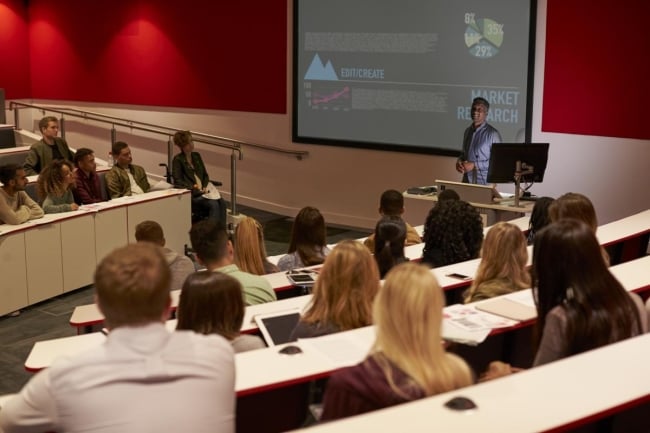You have /5 articles left.
Sign up for a free account or log in.

Istockphoto.com/monkeybusinessimages
The American college faculty is, once again, becoming more heavily full-time than part-time, new federal data reveal -- as professors make up a modestly smaller part of the overall higher education workforce.
Throughout the early part of this decade, Education Department data showed that the number of instructors who worked part-time consistently outpaced the number who worked full-time, as adjunctification -- higher education's version of the gig economy -- took hold.
In 2013, for instance, 747,413 (or 50.7 percent) of the 1,473,325 college and university employees whose jobs were deemed primarily focused on instruction (excluding tens of thousands who were primarily researchers) worked part-time. In 2015 that proportion had fallen to 50.2 percent.
New data released Tuesday by the Education Department's National Center for Education Statistics show that 748,277 of the 1,454,136 postsecondary employees characterized as instructors were employed full-time -- 51.5 percent. As seen in the chart below, that continues a trendlet in the last few years in which the number of full-time instructors has risen and the number of part-timers has declined -- thereby tipping the scales (ever so slightly) back in favor of full-time employment.
Source: U.S. Education Department, National Center for Education Statistics
Lest advocates for a full-time (and tenured) faculty get too excited about the reversal in these numbers, some notes of caution.
First, the rebalancing of full-time versus part-time instructors has been driven much more by a decline in the number of part-time instructors -- particularly at for-profit colleges and universities, which have experienced a sharp decline in their number amid struggles both self-induced and regulatory.
The number of part-time instructors over all in higher education has been dropping by about 1.5 percent a year in recent years, driven by double-digit percentage drops in the number of part-time instructors employed by for-profit colleges -- from 84,352 in 2016 to 58,333 in 2017 and 47,727 in 2018.
In other sectors, by contrast, the percentage of part-timers is growing. Among four-year public colleges, full-time instructors still made up 61.3 percent of the total of 527,925 in fall 2018, the federal data show. But that's actually down from 62.5 percent of the 488,563 instructors at those institutions in 2015. And a similar if milder trend is evident at private four-year colleges, where full-time instructors made up 49.1 percent of the total of about 380,000 in 2015 and 48.9 percent in 2018.
Community colleges are in between. At two-year institutions, the number of instructors over all is shrinking (from about 351,000 in 2015 to roughly 312,000 in 2018), but part-timers are disproportionately being shed, such that the proportion of all instructors who are full-time has risen to 33 percent from 31.9 percent over that time.
A second area of concern for faculty advocates is that as the overall higher education workforce is staying relatively level in number -- it has risen (barely) to 3,983,860 in 2018 from 3,981,632 in 2015 -- the faculty as a whole is shrinking. The 1,472,331 instructors in 2015 dipped to 1,454,136 in 2018, a decline of 1.2 percent. And the faculty share of the entire college and university workforce fell from 37 percent in 2015 to 36.5 percent in 2018.
The areas of the higher ed employee base that have grown the most over that period? Student affairs (6.4 percent) and business operations (7.1 percent), and a broad catch-all category that includes "community, social service, legal, arts, design, entertainment, sports and media occupations" (6.6 percent).
"Management occupations"? An increase of 2 percent.





